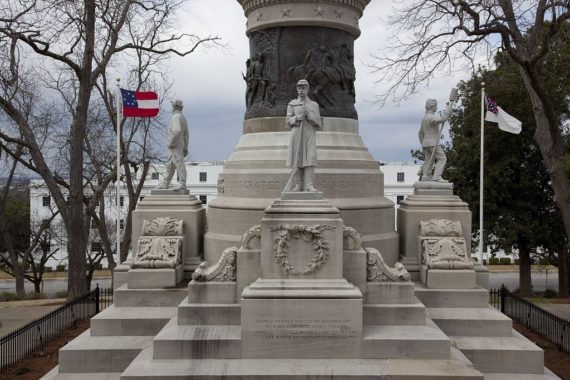
As explained yesterday, Washington Post reporter Courtland Milloy maligned my “Defending Confederate Monuments” speech presented on Lee-Jackson Day in Lexington, Virginia. He asked that I send him a copy while we were sitting together in the front audience row during the preliminaries. I emailed it before I took the podium. After my speech he thanked me and said, “I will be in touch.” But he never contacted me. In a post here, yesterday I responded to his remarks about an incident I don’t recall ever happening. Today I reply to his comments about African-American allusions in the speech.
Why My Confederate Statue Speech Included References to Blacks
Post reporter Milloy begins his article:
At the Robert E. Lee-Stonewall Jackson Day luncheon in Lexington, Va., this past weekend, I was surprised by the level of attention that was paid to racial issues. . . There was no apparent reason to bring up the subject of race.
“No apparent reason?” . . . My “Defending Confederate Monuments” speech included remarks about slavery and Southern blacks because statue opponents consider both factors to be good reasons for tearing down statues. Thus, any speech defending them must necessarily address slavery and racism. I felt compelled, for example, to debunk the Southern Poverty Law Center’s (SPLC) false claim that the 1911-1915 surge in statue erections reflected racism by explaining the period coincided with the fiftieth anniversary commemorations of the war when the old soldiers were fading away. Statues for Northern veterans also surged during those same years.
A “heartfelt” 1890 speech by black Mississippi legislator John Harris supporting a $10,000 appropriation for a Confederate monument apparently annoyed Milloy.* Harris and all five other black legislators voted “yea” thereby helping the bill pass by a vote of 57-to-41 in the lower chamber. This was too much for Milloy.
First he wrote that I gave a “verified” account of the speech as though he expected me to fabricate the source. Once he realized it was genuine he wrote, “There’s always more to the story” when a statue defender speaks. He continued:
It [Harris’ speech] was a compromise effort to get more white legislators to oppose a newly drafted Mississippi constitution, [which disfranchised black voters with a poll tax and other requirements.] And when the Confederate statue that Harris had voted for was erected, there was no doubt in anyone’s mind what it symbolized.
It is true that Harris opposed the formation of a constitutional convention to replace the 1868 Carpetbag Mississippi constitution but there was no “newly drafted constitution” at the time. Moreover, the statue bill was a carveout of larger funding from a relief bill for disabled Confederates and the destitute families of deceased veterans. His speech was a moving explanation of why he wanted $10,000 from the gross funding to be applied to a statue. While nobody can rule out the possibility that Harris was trying to influence legislators to vote against a constitutional convention, the argument is speculative. Since Harris was merely showing a preference between two applications of money appropriated specifically for Confederate veterans and their families, it seems more logical to take his words at face value.
Finally, Milloy mentioned the 1896 Plessy v. Ferguson Supreme Court ruling that legitimized the “separate but equal” race doctrine as another stain on the South. Although the case involved a 1892 Louisiana incident, Justice Henry Brown of Michigan cited a Boston precedent upholding segregated schools. Six of the other justices that joined him in the 7–1 decision were from states that were Union-loyal during the Civil War. The lone dissenter was from Kentucky.
The Washington ‘Democracy dies in Darkness’ Post declined to publish my response, which I provided in an Op-Ed submission.
*Harris’s speech is excerpted in “Defending Confederate Monuments”






